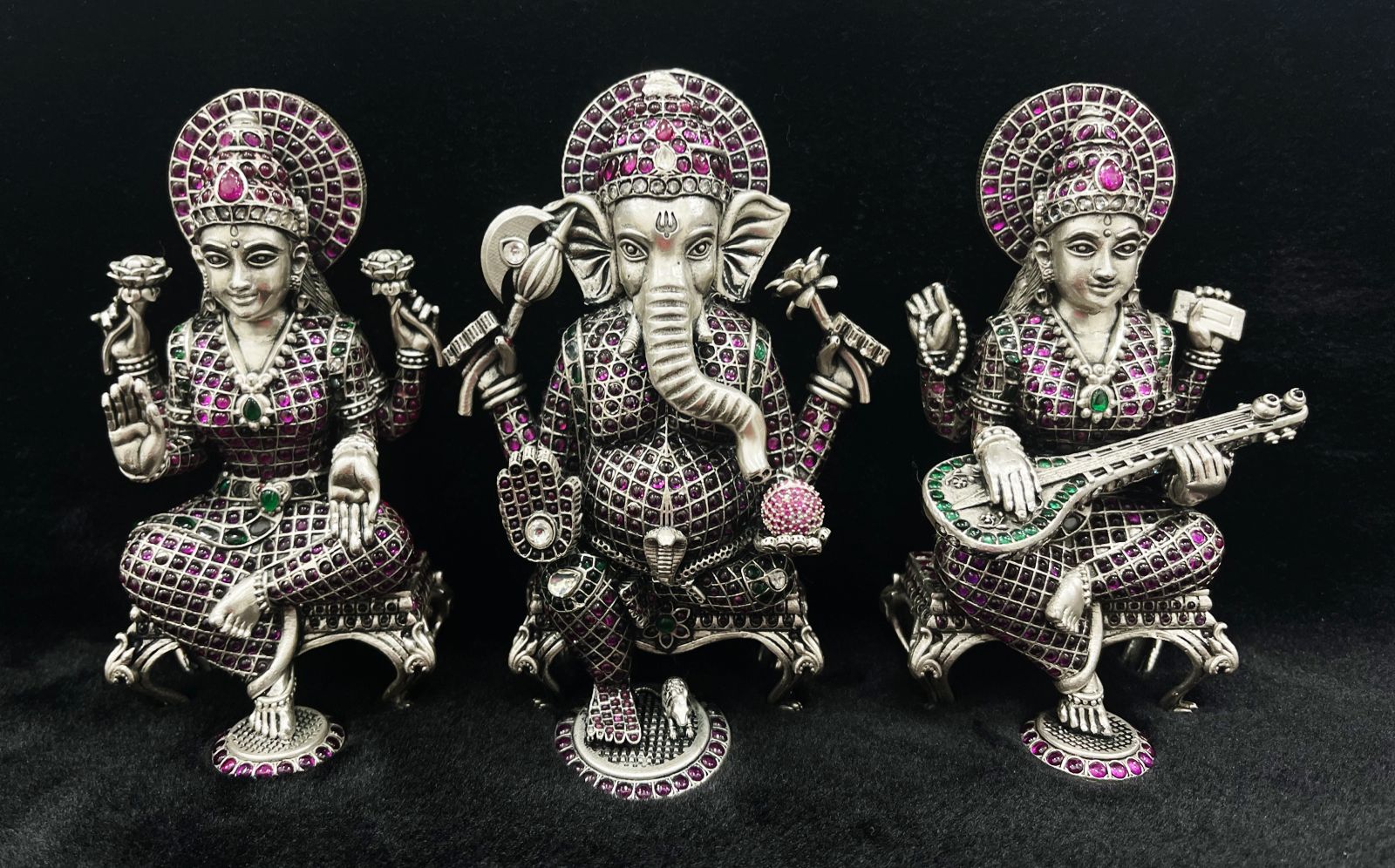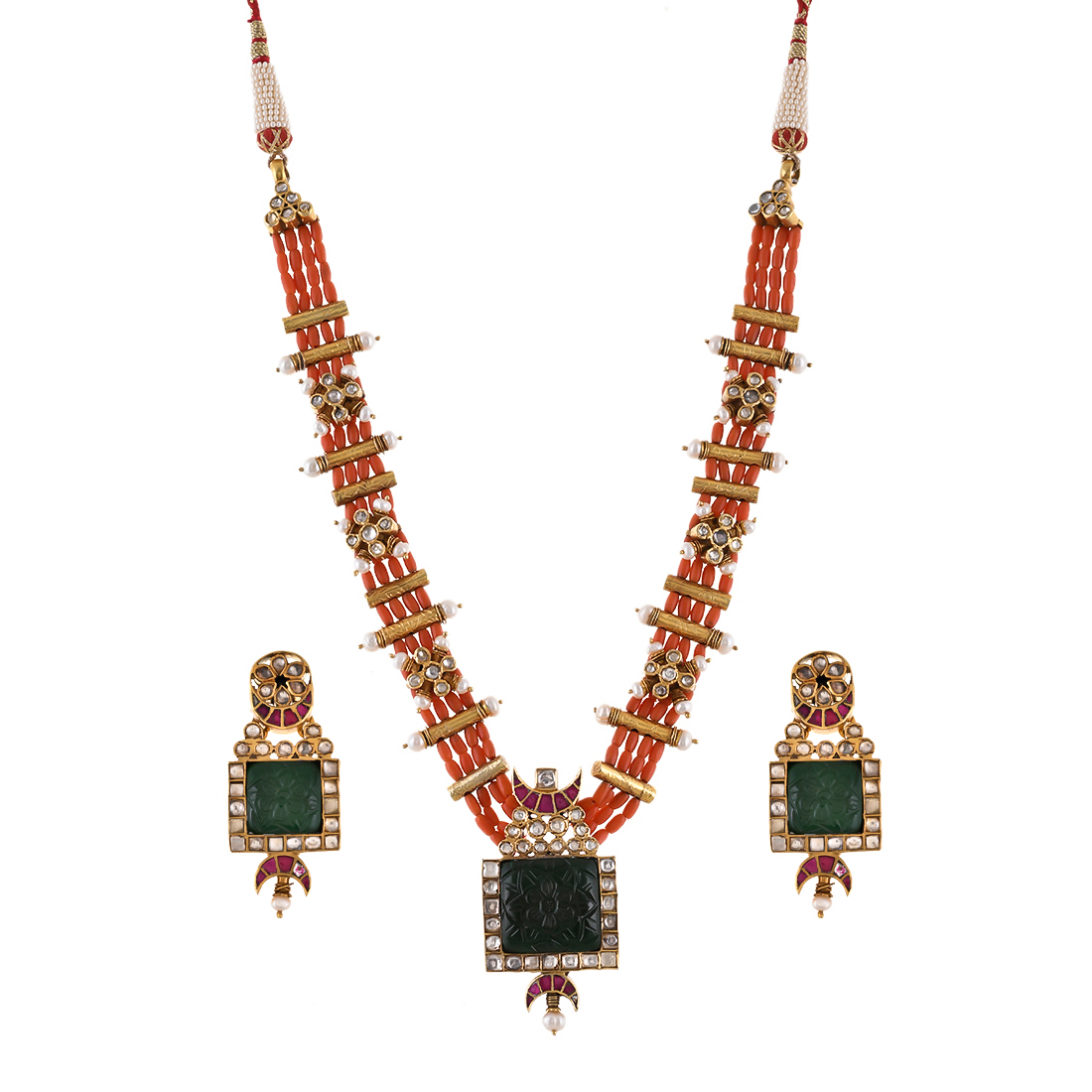How Is Sterling Silver Different From Pure Silver?
How Is Sterling Silver Different From Pure Silver?
We have a long history and cultural significance with silver. From our ancestors till now, we have long been mesmerized and by the sparkling splendor and understated elegance of silver. Silver has always been a part of our culture from ancient times; from jewellery, utensils, coins, to royal structures, idols, and accessories, silver has been cherished for several years. Many of you might find this heading weird as you have always believed that both pure silver and sterling silver are the same. In fact both the words are often used interchangeably as they are considered synonyms of each other. Well, there is no one to be blamed for this because it is tricky and difficult to determine the difference between them. If you buy silver jewellery online, then you must have noticed that it is tough to know whether the piece displayed in the picture is genuine or fake. Even when you go to a shop to get your hands on silver jewellery or sterling silver earrings, it is hard to differentiate between them. To make things easier for you and impart some understanding, here is an article that will share how you can distinguish silver from sterling silver and vice-versa. Lets’ start with finding what these two elements are:
What Is Silver?
Also known as fine silver, it contains 99.9% silver and has 0.1% trace of other elements. While the bright and lustrous appearance of pure silver makes it perfect for jewellery and decorative items, but it's too pure property makes it extremely difficult to use. The purest form is too soft and malleable, so it tends to lose shape and can wear out. Hence, it is mixed with other metals to make the piece harder and create a strong alloy. Over the years, this metal is used for several purposes apart from making jewellery by people across the world irrespective of their lifestyle and religion. They are used to make utensils, decor, religious talismans, ornaments, currency, and also for trading. Considered a symbol of trust, silver is also used as medicine in the late 1930s as it has antibiotic properties. If we talk about the present scenario, then silver has just 2% of worth as compared to what it was 500 years ago.
What Is Sterling Silver?
To overcome the challenge of working with pure silver, experts made an alloy of silver by mixing 92.5% pure silver and 7.5% hard metal like zinc, copper, or nickel. This resulted in a metal that is less soft, easily moldable, more durable, and as lustrous and amazing as pure silver. The metal is also known as 925 silver or 925 sterling silver because of its pure silver concentration. This alloy version of silver is not just harder and durable than its pure form but also equally shiny and opulent which makes it extremely popular and perfect for making silver jewellery and accessories.
The sterling silver alloy was originated in continental Europe and its first usage dates as far back as the 12th century. Since then, it is very widely used to make beautiful, intricate, and well-crafted jewellery, ornaments, and utensils that were extremely difficult with pure silver. The 925 silver retains the aesthetic qualities of pure silver including the brilliance, brightness, and sheen with the added strength and durability because of metal mixing that allows intricate artistry work on the metal.
There is a coin silver as well which is a low-quality alloy and has 90% or less silver. The jewellery made of this substance can be tagged as .925/925/92.5/ sterling or 925 silver.
Sterling Silver Jewellery:
Sterling Silver Jewellery has been making rounds for many years now. As 925 silver or sterling silver is more durable as compared to pure silver, it is easy to design more intricate patterns and mold the metal in various ways to get the meticulously crafted jewellery pieces. The sterling silver jewellery has an understated sheen that gives it the amazing brilliance and lustrous glow. The new designs, unique patterns, delicate motifs, and intricate craftsmanship are all possible on sterling silver because of its composition. All these properties make stunning jewellery designs that are perfect for any occasion be it a casual outing or a wedding.
Tarnishing
Silver may be softer but sterling tends to tarnish faster because of the additional alloy present in it. When fine silver reacts with air, it results in fading, discolouring, and look dirty. However, due to its combination with zinc, copper, nickel, and other metals, sterling is more prone to tarnishing as it can react with oxygen and other elements.
Plating
Sterling silver earrings and other jewellery are plated with the pure silver layer so that the piece shines more. Have you ever seen jewellery item marked, “sterling silver plated?” it means that the jewellery piece is made of copper, zinc, or nickel and then it was plated with a silver layer which will wear off in some time.
There is an acid-test to check the purity of the silver. But, it is better to let the shopkeeper prove that to you instead of performing the test yourself. Next time, you have to buy silver jewellery online, check the stamp for the “999” or “925” label. You can also find “ss” written used as a sterling silver stamp.
We hope that you are now one step closer to understand the difference between pure and sterling silver and the write-up will help you make a wise and calculated decision in the future.







.jpg )
.jpg )